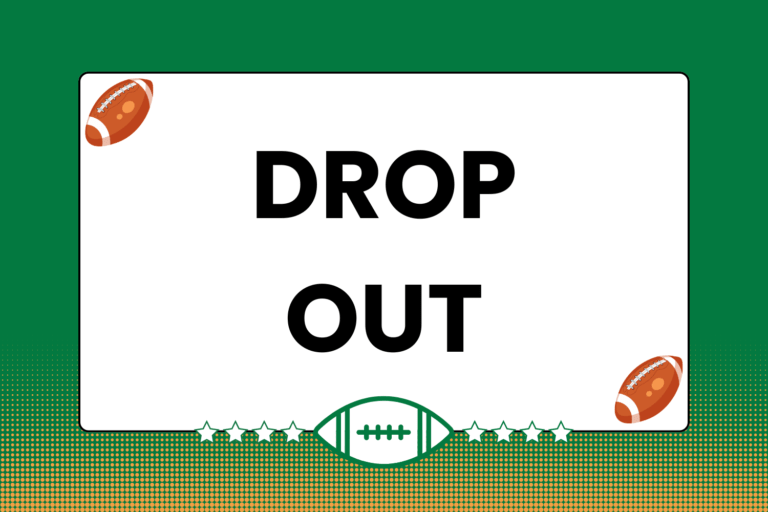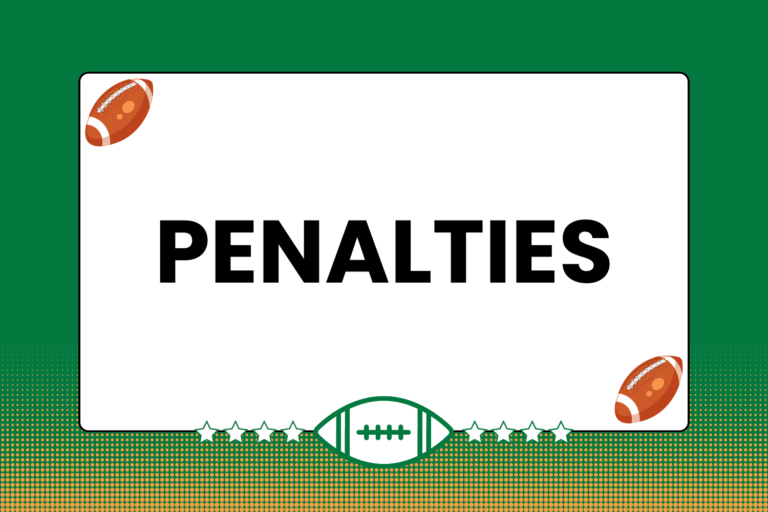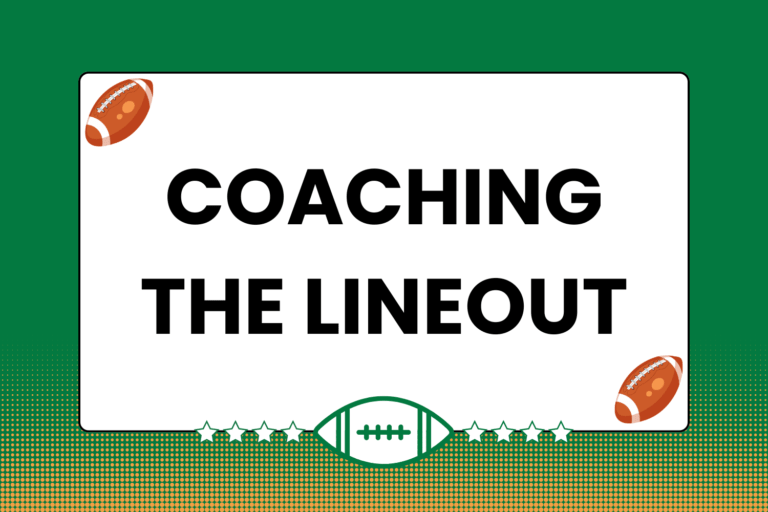Set Plays are called so because there are specific structures and regulations that determine the proper course of action for both teams. In other words, the actions already are choreographed and ‘set’ in place. The opposite of this is a loose play, which takes place when the ball is live and in play. Loose plays are spontaneous and reactionary in nature. Meaning, what happens right now is usually dictated by what just happened, and what’s about to happen gets determined by what’s happening right now. Here’s a look at some of the more common set plays.
The Kick-off
A Kick-off starts a rugby match and is how a match is resumed after halftime or after one team scores. The kick-off that starts a match or resumes it after halftime is done with a place kick (kicking the ball from a tee or other means that ensures it stands upright on its own). The kick-off that takes place after a team scores involves a dropkick by the team that was scored on and back to the team that previously scored.
In the Game
Both types of kick-off occur at the 50-meter line. The players on the kicking team usually line up at least a few meters behind the player kicking the ball, but they all must be behind the ball before it’s kicked. There are no specific rules governing how players have to line up for a kick-off, other than the kicker’s teammates must be behind the ball before it’s kicked and the entire receiving team must start at least 10 meters back before it’s kicked. The kicking player will usually set up closer to one touchline or the other, and the majority of the kicker’s teammates will line up on the open side of the pitch.
They will be matched on the other side of the 50-meter line by the majority of the players on the receiving team, though these players will again be 10 meters back. This is because the ball must travel at least 10 meters before any player on the kicking team can make a play for it, although any player on the receiving team can play the ball even if it hasn’t gone 10 meters.
The kicker can kick it anywhere on the pitch, though it is a penalty if the kickoff goes into touch. Most often, the kicker will kick the ball toward the open side of the pitch, as that is the spot where the kicker’s teammates will have the easiest time making a play for the ball. Play begins as soon as the ball is kicked, marking the transition from set play to loose play.
Hot Tip: Kicking Options
The ways the ball is allowed to be held still for a place kick are:
- Denting the ground: A dent is made with the kicker’s foot and one end of the ball is placed in the dent.
- Using a tee: Popular for penalty kicks or other kicks where the kicker tries to make the ball move to one side or the other after it’s kicked.
- Using a pile of sand: Fairly old-fashioned and it works similarly to using the dent in the ground.
The Lineout
A Lineout occurs after the ball goes In Touch, either by itself or when the player carrying it steps into touch. Two groups of players from each team, made up of forwards from each side, will line up at the spot of the lineout:
- The team that possesses the ball will send a player (usually the hooker) into the touch area to throw the ball back in.
- One player from each team will line up a few meters back from their respective line of forwards. This player is the ‘receiver.’
- One player from the team that put the ball into touch will stand between the touch line and the front of the lineout. That player cannot make a play for the ball until the player that threw the ball rejoins the play.
How a Lineout Works
A lineout takes place after the ball goes into touch. The number of players in each line is determined by the team that actually throws the ball in (the team that didn’t cause the ball to go out of bounds, unless it was after a penalty kick). The other team must have the same number of players in their line, or it’s a penalty. One player (usually the hooker) from the team with the ball will stand just beyond the touch line and actually throw the ball in.
However, because that player is considered part of the lineout, the other team must match that player with one of its. This player stands in the space between the touchline and five meters out from the touchline and cannot engage in the lineout until the player who threw the ball in re-engages.
Also, one player from each side stands about two meters back from their line of forwards, and although they’re not in line with the other players, they’re technically a part of the lineout. This player is called a ‘receiver,’ and is usually occupied by the scrum half. Once the ball is thrown in, the team that catches it will usually throw it to their receiver, although this is not mandatory. The rest of the players not involved in the lineout must be at least 10 meters behind it.
The Lineout in Action
Once everyone is in position, the player with the ball will throw it into the alley (the space between both team’s line of players in the lineout. Much like the strategy with putting the ball in a scrum, the player throwing the ball will call out a series of code words before throwing the ball. These code words tell the thrower’s teammates in the lineout which player he/she is trying to throw the ball to, and when that player should jump. A ‘jumper’ is any player involved in a lineout that jumps to catch the ball after it’s thrown. Jumping before it’s thrown is a penalty. Usually, two of the jumper’s teammates – one on each side – will help the jumper get as high as possible by lifting the jumper in the air.
The ball must be thrown in straight however, giving both teams a chance to catch it, or the referee will start the lineout over again. Too many illegal throws will result in possession of the ball going to the other team, and a new scrum. A successful throw-in is usually the result of good timing on the part of the thrower and jumper, good support by the lifters, and proper placement of the throw itself. Play resumes as soon as a player touches the ball after it’s thrown in.
The Drop-out
Occasionally, the ball will be loose in one team’s in-goal zone, usually after a punt has rolled into it or (much less frequent) if a player goes in for a try and loses possession of the ball before it’s successfully grounded. If the ball carrier grounds the ball or is tackled in his team’s in-goal area, a set play called a Drop Out takes place. Basically, when a player grounds the ball in their own in-goal zone, play stops and they’re allowed to kick the ball away, sacrificing possession of the ball for a less dangerous field position. However, the ball must stay in bounds and cross the 22-Meter line, otherwise it’s a penalty to the other team.
Set Plays in a Nutshell
Again, set plays are only used to start or restart play. The vast majority of a game is very fluid in nature; the pace goes up and down, the ball is transferred from one team to the next, and anything can happen at a moment’s notice. Set Plays provide the structure that allows open play to even exist.





